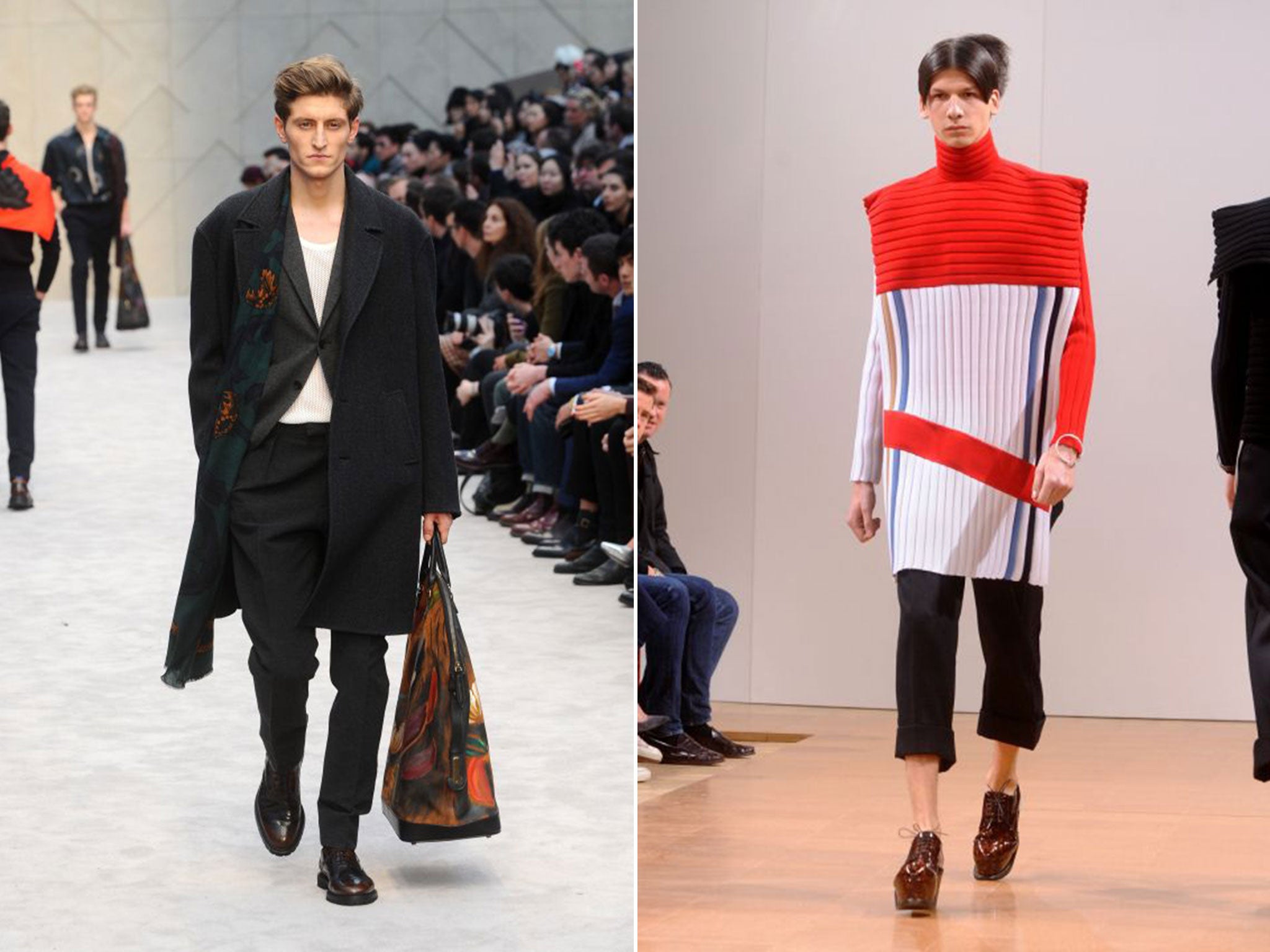Capital gains: Young British fashion designers are attracting international brands to London's menswear showcase
Moschino, Tom Ford, Burberry Prorsum and Alexander McQueen willall be represented at 'London Collections: Men'

Today is the start of London Collections: Men. It's the fifth time that London has presented a stand-alone fashion week for men, cramming almost 70 shows and presentations into three days. It isn't just about showing what British designers have to offer, though. This time around, Italian label Moschino (helmed by the American designer Jeremy Scott) has elected to show its menswear in London, and Scott joins fellow American Tom Ford and a welter of homegrown names including Burberry Prorsum and Alexander McQueen. The visibility of London's menswear showcase is fast rising.
What is it that makes London menswear so appealing? Its comparative youth, for a start: Milan and Paris have been showing menswear separately from their women's collections for more than 15 years. The status as a fresh newcomer of London Collections: Men is mirrored in its designers, whose ages hover somewhere around 30.
JW Anderson, newly appointed head of Loewe, reaches that milestone this year; new talent Craig Green, who shows his hotly anticipated show tomorrow, is 27; while the inaugural winner of the BFC/GQ Designer Fashion Fund, Christopher Shannon, is only 33.
Compare that with the stalwarts of Milan and Paris: Giorgio Armani is 79, Dries Van Noten 56. Even Hedi Slimane – a champion of youth fashion – clocks in at 45. London menswear is showing the world something new.
That newness is vital. "Fashion is reaction. It's about what people are talking about, what happened last season," says the designer Jonathan Saunders. "If you're going to make a man go into the shops and buy something new every season, then newness is important."
JW Anderson agrees … in a way. "You need to make sure 35 per cent of the collection is something you're not comfortable with," he says. "If you're comfortable, it's stale."
Stale is a word that is often applicable to menswear – where, even at designer level, there is reliance on the tailored suit and casual basics including chinos, cotton shirts and sweaters, which demand little or no design input.
If designers in Milan and Paris can be relied upon to deliver their aesthetic tropes (Armani's relaxed, neutral tailoring, Cavalli's glitzy look), then London has gained a reputation for bucking trends and spearheading new movements – the resurgence of luxury sportswear, for example, which can be traced back to designer Kim Jones 10 years ago. Jones is now men's style director of Louis Vuitton.
The presence of those emerging young designers has enticed more established brands to show in London. Both McQueen and Burberry previously presented their clothes in staid Milan, before joining the London showcase last year in January and in June, respectively.
What is London's pull for those mega-brands? It's the same as it is for press and buyers – the latter increasing 30 per cent year on year, and from 33 countries: the promise of something fresh and exciting.
Subscribe to Independent Premium to bookmark this article
Want to bookmark your favourite articles and stories to read or reference later? Start your Independent Premium subscription today.

Join our commenting forum
Join thought-provoking conversations, follow other Independent readers and see their replies